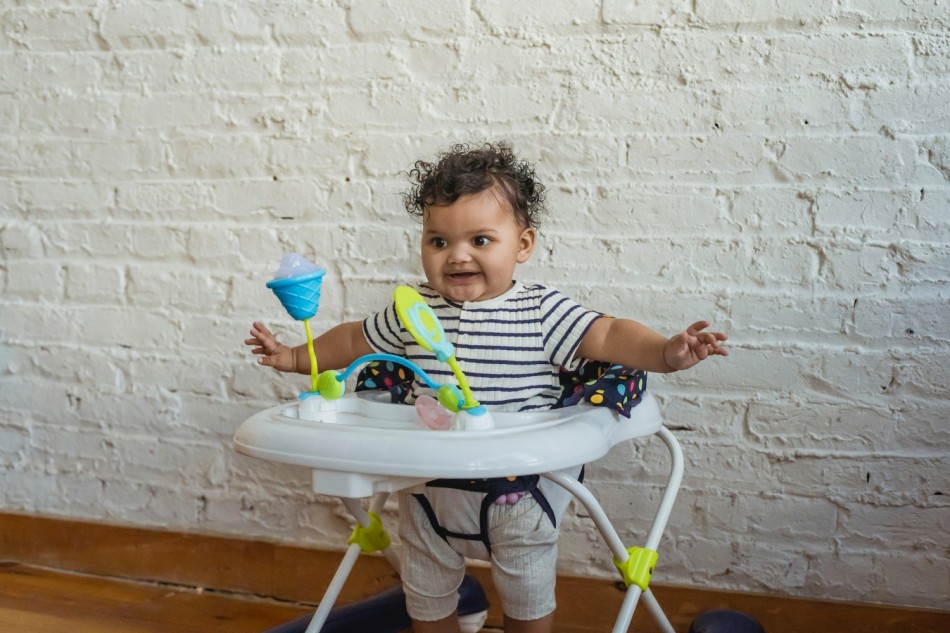Choosing a Walker to Help Your Baby Develop Walking and Standing Skills

A baby walker is a fun tool to help your child develop their walking skills. But of course, you should look into several factors, from safety considerations to what will work best for your home and baby.
What to consider in a baby walker
It is vital to provide your baby with the right support while they are learning to walk. Thus, choosing the right baby walker ensures your child's safety. The items below can help you decide which one to purchase.
-
Baby's mobility. Choose a walker if your baby is starting to sit up and pull at things to stand. If your child is already an independent walker, they will have more fun with a walker that cruises faster.
-
Your home's flooring. Check the type of walker, and see if they work better on tile, hardwood floor, or carpet.
-
Portability. A walker that folds flat will be good if you're always on the go. For example, you have to bring your baby to the sitter's house or to a vacation. Some walkers are bulky and difficult to transport.
-
Budget. Baby walkers vary in price. The best baby walkers for 2023 can range from less than $20 to more than $100. And don't forget that there are also walkers with more fancy features that cost more.
-
Extra features. While you can buy a cheaper walker with basic features, there are several other products with rubber and locking wheels for safety. Some brands have plenty of music and bright lights.
Choosing a walker for your baby
After determining your budget, flooring, baby's mobility, etc., you can now look at the physical features of the walker that will help the baby learn to walk and stand. Here are the things to check.
Types of walkers
-
Classic walkers help your babies walk around the room. They have a wide base with support arms attached to a play area with an integrated or detachable seat. They are made from non-toxic materials with educational toys to keep babies entertained and busy as they walk.
-
Sit-to-stand walkers are less expensive. The primary purpose of this type of walker is to help the baby learn to stand and walk. They are available in multiple speed settings and various colors, with a detachable play panel so the child can play with them on the floor.
Weight restrictions
Baby walkers are designed to be safe, but some babies are tall and bigger than others of the same age. Therefore, you should check the walker's weight limit.
Safety and comfort
Babies should be safe while in the walker. Choose a model with non-skid pads on the base and rubberized feet. There shouldn't be sharp edges and places where the baby's fingers could get trapped. The wheels should have a diameter of about 50 millimeters. Pick one with a thick padded seat and high back support for comfort. A walker should have adjustable height and space between the legs.
These are the priorities when choosing a walker to train your child in standing and walking. It could be your baby's first elliptical tool. Thus, you should give care and attention to picking the right walker.
© 2024 ParentHerald.com All rights reserved. Do not reproduce without permission.
* This is a contributed article and this content does not necessarily represent the views of parentherald.com
